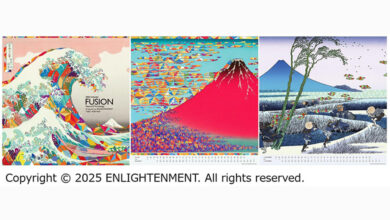Unlocking Prints Potential and Profitability Through Sustainable and Responsibly Manufactured Products

By Shadi Bakhour, B2B Business Unit Director, Canon Middle East
COVID 19 has changed the business landscape forever and as we enter the last quarter of 2021, there is no doubt that it has had implications on the print industry as well. There has been an accelerated need for print service providers to innovate and transform their operational model, so as to look towards new avenues to diversify their offerings and profitability, and as a result, a major shift has taken place within the printing industry. According to the “Commercial Printing Market – Growth, Trends, COVID-19 Impact, and Forecasts (2021 – 2026)” report, while demand for commercial printing was affected during the COVID-19 outbreak, some distinct trends have come to the forefront: including, the need for short-run productions increasing rapidly for printed materials such as books, direct mail, brochures, labels and catalogs, and a distinct shift towards sustainable practices being incorporated by key industry players and organizations, in response to customer demands.
These findings are further supported by the industry-first market study that Canon carried out in 2020, which highlights the opposing opinions between print service providers and corporates, regarding sustainability. While 53% of corporates are transitioning to sustainable printing solutions in the coming months, 40% of print service providers believe pricing is a major concern and have not yet invested in sustainable products, to answer the rising demand. This insight is key as it presents an opportunity to narrow the gap between print service providers and their customers, in the immediate future. With environmental regulations being adopted globally, and the pandemic increasing the pressure on governments and businesses to follow sustainable business practices, print service providers will eventually have to invest in sustainable technology, if they are to remain competitive in the market.
While 40% of print businesses believe that the benefits do not yet outweigh the costs, it’s key to note that in the long run, lower ink consumption, increased precision, less wastage and faster turnaround times, all lead to increased profitability and are just some of the benefits of including sustainably designed and responsibly manufactured technology. As we slowly start moving towards a post COVID-19 era and towards “business as usual”, PSPs will need to exhibit increased productivity, ensure shorter run times and ensure they follow sustainable models if they are to meet customer demands, follow market trends and ensure business continuity within the “new normal”.
At Canon we are committed to reducing our reliance on natural resources and maximizing our sustainability commitments. Through incorporating innovation, technology driven breakthroughs and sustainable advancements in our product range, we are proof that it is possible to unlock print’s potential through responsibly manufactured products. Here are 4 state-of-the-art technologies and their benefits, that we incorporate in order to ensure we are meeting our commitment to the environment and our customers.
- Radiant Fusing technology for less energy consumption, shorter print timesand reduced noise pollution
Consuming less energy and generating lower noise, the Radiant Fusing technology applied in our PlotWave products is an eco-friendly fusing method, that provides instant-on printer availability with no warm-up time. There is virtually no ozone emissions, no odor, no toner dust contamination and the non-toxic Toner waste can be disposed with general office waste. The basic principle of Radiant Fusing technology is to find the most efficient way to fix toner onto the paper, hence, the paper with its toner deposit is transported through the fusing unit, emitting the optimum amount of heat in the shortest time possible. A lower power consumption is achieved since the metallic tiles are heated instantly (no warm-up), limiting the amount of power required in ready mode (standby) and sleep mode – at least 50% less energy usage than comparable systems.
- CrystalPoint technology that has the combined benefits of toner and inkjet
Canon’s ColorWave products use the Crystal Point technology to offer the combined benefits of toner with the benefits of inkjet, with superior deinking properties making the prints much more environmentally friendly, than standard inkjet prints. The technology uses TonerPearls: small, solid pearls that replace ink, while ensuring crisp print quality with no feathering. The prints dry immediately (removing wasted drying time) and as no heat is used in the drying process, less energy is required. Moreover, there are no ozone emissions, no odor and no system contamination by fine powder or ink and the TonerPearls make for a totally clean system that is harmless for life and the environment.
- UVgel technology which offers the advantages of printer technologies, while eliminating the compromises
Canon’s UVgel technology is aimed at putting an end to the compromises PSPs have to make when choosing from latex, eco-solvent or conventional UV solutions. UVgel technology is specially developed to retain the advantages of prevailing printer technologies, while eliminating many of the compromises, to offer: maximum media versatility, ability to produce multiple applications using a single device and industrial speed. All Colorado products are equipped with UVgel capabilities and the key to Canon UVgel technology is the fact that the ink is essentially a gel, enabling an innovative, instant dry, ‘print-then-cure’ process that has multiple benefits including, the prevention of coalescence (merging) between individual ink drops, controlling dot gain so that much more ink can be deposited in fewer passes and improving speed (since the prints are instantly dry). UVgel technology results in up to 40 % less ink consumed – this is not only an economical benefit, but also a clear ecological advantage.
- VariaDot technology with connected workflow software for reduced ink usage, energy and wastage
Boasting both economic and environmental benefits, the VariaDot imaging technology in Arizona products allows printheads to produce specific droplets of ink, whereby the connected workflow software can specify an appropriate droplet size for each specific image feature, resulting in up to 50% less ink being used when compared to fixed-dot, 6-colour printers. While the intuitive workflow also means fewer misprints and less waste, the Arizona printers all come with LED, which offers additional energy-savings by its instant-On operation – this means there is virtually no warming up period. Also, the UV-LED lamps are turned off automatically, resulting in 50% less lamp usage.
The future of the print industry lies in its ability to balance economics with a sustainable global society and the good news is, that it is possible to utilize technological strengths to achieve corporate growth and profitability, while implementing environmentally conscious manufacturing.






19 Comments